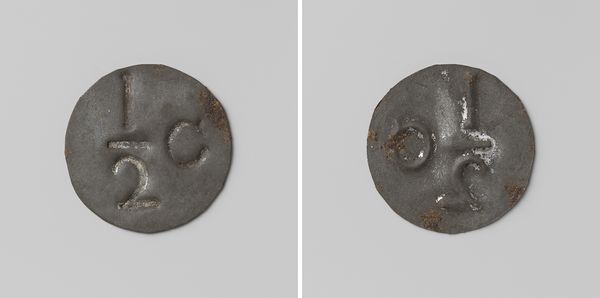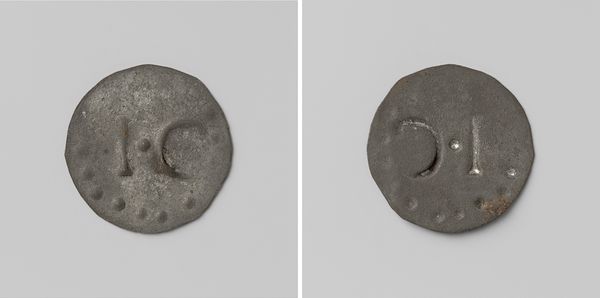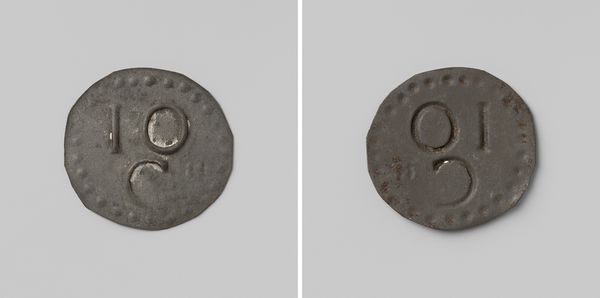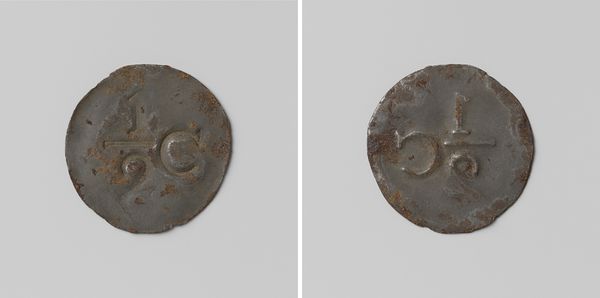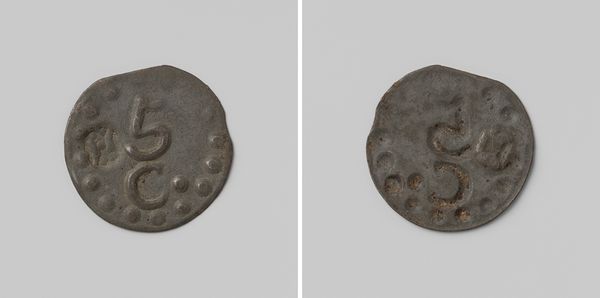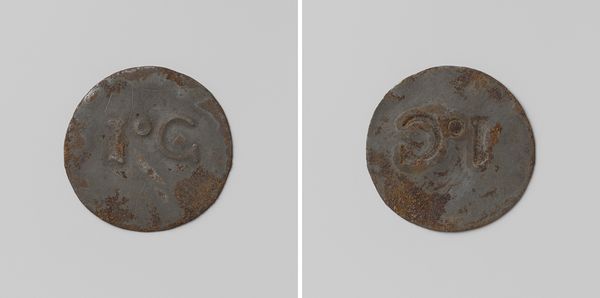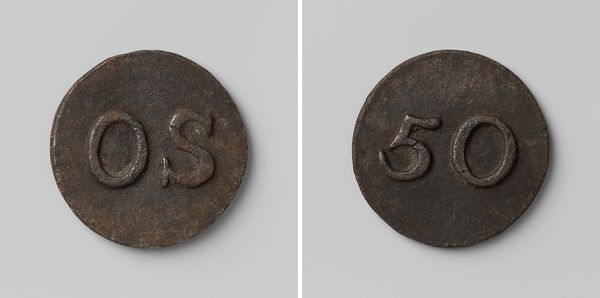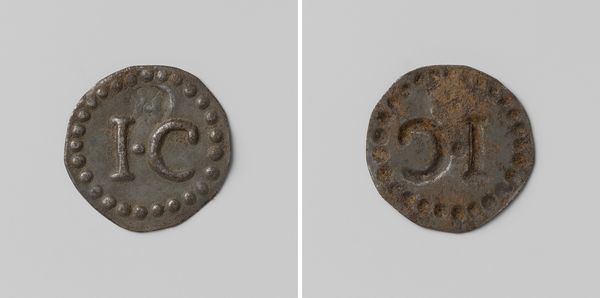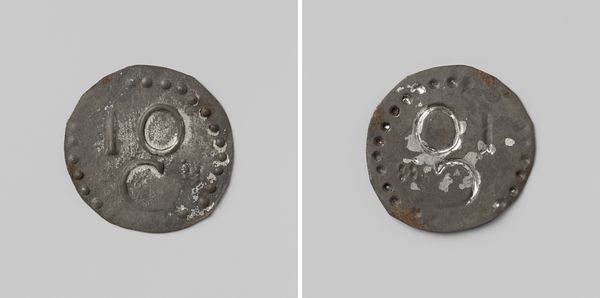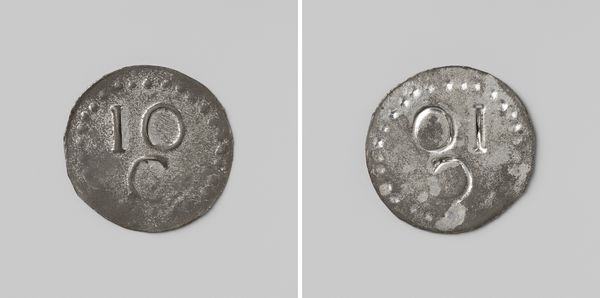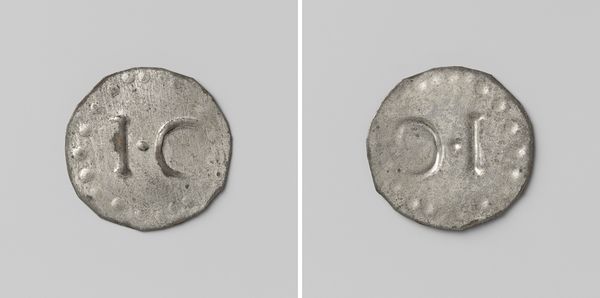
Strafgevangenis Ommerschans, huismunt geslagen op last van de Maatschappij van Weldadigheid ter waarde van 1 cent before 1830
0:00
0:00
anonymous
Rijksmuseum
print, metal
# print
#
metal
Dimensions: diameter 3 cm, weight 2.41 gr
Copyright: Rijks Museum: Open Domain
Curator: Up next we have a rather unique metal token—it's identified as 'Strafgevangenis Ommerschans, huismunt geslagen op last van de Maatschappij van Weldadigheid ter waarde van 1 cent.' It’s believed to be from before 1830 and can be found in the Rijksmuseum collection. Editor: It looks so austere. The rough metal and crude stamping really drive home a feeling of… enforced frugality? Even the circular form feels constrained, almost squeezed into place. Curator: It's fascinating how monetary forms shift, and this piece illustrates that transition poignantly. These tokens were created at the behest of the Society of Benevolence for use within the Ommerschans penal colony. Note how the stamping presents two faces of the same object in the visual composition, reflecting the Janus-faced nature of such societal endeavours. Editor: The Society of Benevolence; that moniker alone sets off alarm bells! These institutions always mask complicated, often exploitative, social structures behind well-meaning titles. A one-cent denomination suggests a very limited internal economy within that prison society. The control aspect seems insidious, managing access to even the most basic transactions. Curator: Precisely. Tokens like these serve as tangible metaphors for control, illustrating the power dynamics inherent in these welfare experiments, supposedly about uplifting people. The very object, normally symbolizing freedom of trade and personal value, here reflects social confinement. The number and letter are debossed into the form and they present a distinct face that echoes back and forth across history. Editor: Absolutely. I find myself thinking about the implications on individual identity. This coin isn’t just a marker of economic value, but it serves as an imprint of forced community – a grim, institutional brand on the individual's already limited agency. Were these ever collected as souvenirs, or used beyond the walls, further distorting perceptions? Curator: What remains remarkable is that this unassuming artifact, an anonymous piece born out of the desire for better economic and social reforms, can embody power structures in such an iconic way. Its roughness communicates an intent which becomes an inadvertent testament. Editor: A stark reminder of the ethical quicksand that exists where societal uplift becomes intertwined with social control. A sobering testament in cold metal.
Comments
No comments
Be the first to comment and join the conversation on the ultimate creative platform.
